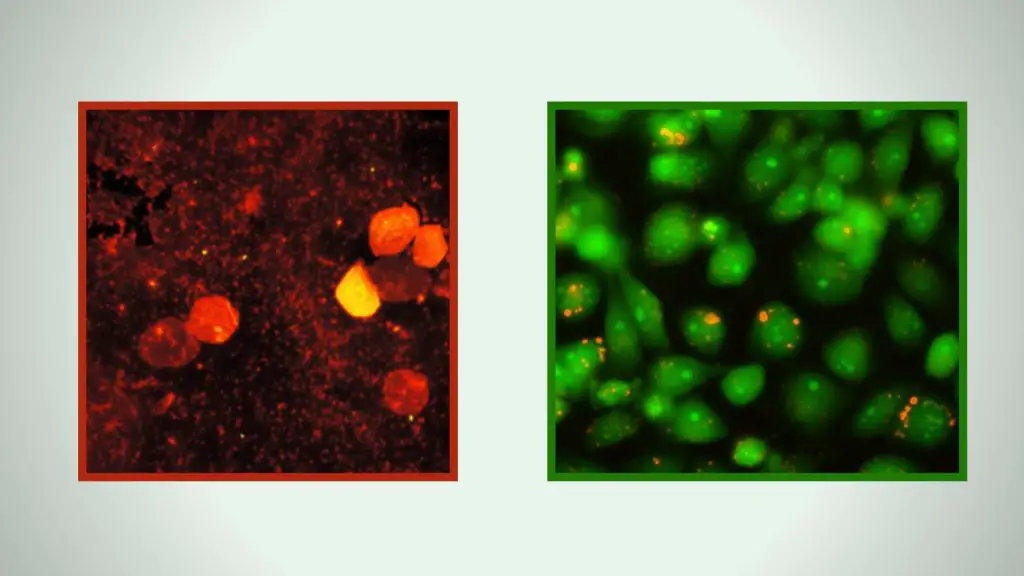Table of Contents
The cell membrane is a biological membrane which also termed a plasma membrane (PM) or cytoplasmic membrane. It divides the interior of the cell from the outside environment, thus protects the cell from environmental stress.
The cell membrane is a lipid bilayer, contains cholesterols between phospholipids which maintain their fluidity at various temperatures. The membrane also contains two important proteins termed integral proteins and peripheral proteins.
The cell membrane helps in cell adhesion, ion conductivity, cell signaling and also controls the movement of substances.
Objective
The main purpose of cell membrane staining is to observe the detailed morphology of the cell membrane.
Acridine Orange contains metachromatic properties, that’s why it is employed in fluorescence microscopy and flow cytometry study of cellular physiology and cell…

Principle of cell membrane staining
The cell membrane is 75 Angstrom thick. In the bacterial cell, the membrane is a phospholipid-bilayer similar to that present in eukaryotic cells. The main difference is, procaryotic cell membrane lacks the phospholipid-protein bilayer to that present in eukaryotic cells.
A plasmolysis technique is used to separate the cell wall from the cytoplasm and the membrane is then stained. In this method, Potassium Nitrate Solution is used to perform the plasmolysis of bacterial cells.
Then a fixative, Bouin’s solution is added to the cell. The fixative solution inhibits the autolysis (enzymes attack) as well as putrefaction (bacterial attack) of tissues. The rigorously autolyzed tissue does not get stained accurately for microscopic study.
When the cells are treated with the Victoria Blue Solution, the cells retain the color of this stain and appear as a deep blue colour.
Requirement for cell membrane staining
- Bacterial Culture
- Potassium Nitrate Solution
- Bouin’s fixative solution
- Victoria Blue Solution
- Glass Slide
- Inoculating loop
- Bunsen Burner
Procedure of cell membrane staining
- Take a clean slide and make it grease-free by washing it with soap and water.
- Allow to air dry.
- Take an inoculating loop and sterilize it by holding it on bunsen burner flame until it becomes hot red. Allow cooling the loop.
- Transfer the bacterial culture on the slide by using this sterile cooled loop.
- Spread the culture on the slide.
- Heat fix the smear, by passing the slide through the flame of bunsen burner for 2-3 times. It will fix the cell at the surface of slide.
- Flood the slide with potassium nitrate solution and wait 15 minutes. This step help in the plasmolysis of cell.
- Add Bouin’s fixative solution to the slide and wait for 15 minutes.
- Rinse the slide with flowing tap water.
- Flood the sldie with Victoris blue solution and wait for 3 seconds.
- Rinse the slide with tap water.
- Blot dry the smear.
- Now, the slide is ready to observe under the microscope by usign oil immersion technique.
Result of cell membrane staining
The cytoplasmic membrane or cell membrane appears as a deep blue outer layer covering a contracted, irregularly shaped body called the cytoplasm.
